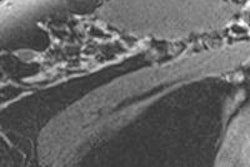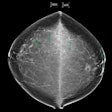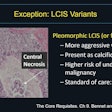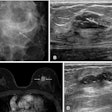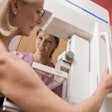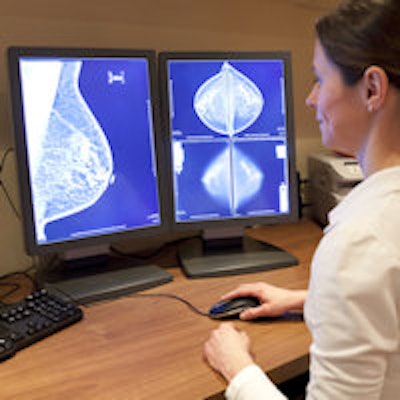
Additional breast cancers found with MRI after mammography can be larger and more aggressive -- and may prompt a change in a patient's treatment plan, according to a new study published in Radiology.
The study addresses the concern that, although breast MR is known to be effective in finding multicentric cancers in younger women and those who have dense breast tissue, these additional cancers may not be clinically significant. However, many of the cancers that breast MR identified in the study -- and that mammography did not -- were larger than 1 cm, wrote lead author Dr. Chiara Iacconi, from USL1 Massa-Carrara in Carrara, Italy, and colleagues.
"We believe invasive cancer larger than 1 cm is clinically relevant disease," Iacconi said in a statement released by RSNA. "In general, it is accepted that radiation can likely treat invasive cancer less than 1 cm, but lesions larger than 1 cm, especially invasive carcinomas, may not be reliably treated with conservation."
Iacconi and colleagues analyzed records from 2,021 patients with newly diagnosed breast cancer who underwent biopsy after preoperative MRI. Of the 2,021 patients, 14%, or 285, had additional cancer detected on MRI that was not found on mammography (Radiology, November 25, 2015).
In 73 (26%) of those 285 patients, MRI identified at least one additional cancer in a different part of the breast than the initial cancer, and these additional lesions were larger than the index cancer in 23% of the 73 patients -- which had the potential to change the patient's disease stage. In addition, MRI-detected multicentric cancers were greater than 1 cm in 25% of the 73 patients.
The additional MR-detected cancers were found mostly in patients with heterogeneously or extremely dense breast tissue, although MR also found additional lesions in 19% of patients who had fatty or scattered fibroglandular tissue.
Although most of the additional cancers seen only at MR represented small-volume disease and could probably be treated with conservation protocols, cancers that were larger than 1 cm and were invasive might not be effectively treated this way, the researchers wrote. These cancers are dangerous and need to be identified.
"Multicentric cancer detected at breast MR imaging that is occult at mammography appears to represent a larger tumor burden in approximately one-quarter of patients and can upstage the diagnosis, resulting in potential changes in treatment," Iacconi's group concluded.







